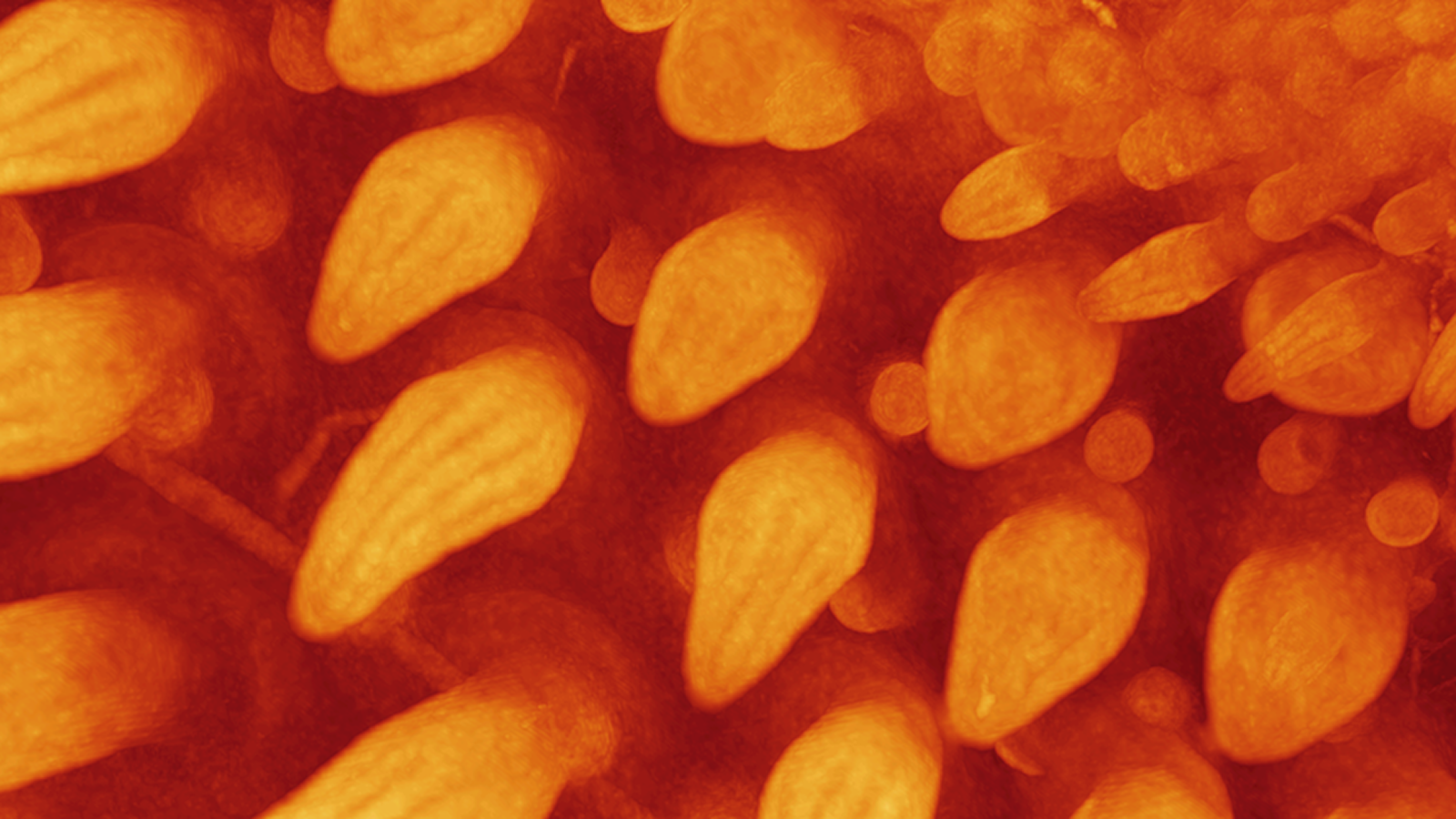Chickens with dinosaur feathers: an astonishing genetic experiment 🐔
Follow us on Google News (click on ☆)
This study is part of a broader effort to understand how and why feathers evolved. Researchers had previously modified the same gene to transform chicken leg scales into feathers, but reversing feather evolution proved more challenging.

Researchers inhibited a gene during the embryonic development of chickens to observe if it would make their feathers more similar to those of dinosaurs. Here, feather buds are seen on the 12th day of incubation.
Credit: © Rory Cooper & Michel Milinkovitch (CC BY)
A gene named 'Sonic Hedgehog' plays a crucial role in embryonic development. By disrupting this gene, scientists were able to temporarily interfere with feather formation, revealing its importance in evolution.
The first feathers were not the branched structures seen in modern birds. They were simple tubules, resembling tiny straws. To understand how evolution built everything from soft down to the showy feathers of peacocks from these simple tubes, researchers used a technique called light-sheet fluorescence microscopy.
Feathers begin to develop in embryonic chickens nine days after the egg is laid. Researchers observed that thick patches called placodes first appear on the developing chicken. These placodes then develop into feather buds, which gradually transform into the familiar branched form of feathers with the help of keratin.
Researchers injected a Sonic Hedgehog gene inhibitor into the eggs on the ninth day of development to observe the effects. Within a few days, the growth of feather buds slowed. The inhibitor also reduced the branching pattern that develops as feathers mature on the embryo.

Modifying the Sonic Hedgehog gene can transform different aspects of chicken development. For example, transient overexpression of the gene can permanently transform leg scales into feathers. But disrupting feather development is much more difficult, researchers found.
Credit: Fabrice Berger & Michel Milinkovitch 2025 (CC-BY 4.0, https://creativecommons.org/licenses/by/4.0/)
However, by the 17th day of development, feather growth had partially recovered as the inhibition of the Sonic Hedgehog gene faded. The hatched chickens had patchy feathers, with bare areas and others where soft, downy feathers had formed, but they lacked outer feathers with a central 'rachis', the distinctive structure of feathers. By the 49th day of life, however, these chickens molted, and the new feathers that emerged developed normally.
What is the Sonic Hedgehog gene?
The Sonic Hedgehog gene is a crucial gene in the embryonic development of animals, including humans. It plays a role in the formation of limbs, the central nervous system, and other body structures.
Named after the video game character Sonic the Hedgehog, this gene is involved in cell signaling, a process that allows cells to communicate with each other to coordinate their development.
Regarding the study on chickens, the Sonic Hedgehog gene was identified as a key player in feather development. By disrupting this gene, researchers were able to observe changes in feather formation, providing clues about the evolution of feathers from dinosaurs to modern birds.
This research highlights the importance of genes in the evolution of physical traits and paves the way for future studies on species evolution.
How did feathers evolve?
Feathers are a distinctive feature of birds, but their origin dates back to dinosaurs. The first feathers were simple, resembling tubes, and evolved into the structures we see today.
Scientists believe that feathers first evolved for thermal insulation, before playing a role in flight and courtship displays. This evolution was made possible by genetic and environmental changes over millions of years.
The study on chickens has provided a better understanding of how genes influence feather development. By disrupting the Sonic Hedgehog gene, researchers were able to observe changes in feather formation, providing clues about the evolution of feathers from dinosaurs to modern birds.
This research contributes to our understanding of species evolution and how physical traits can change over time.